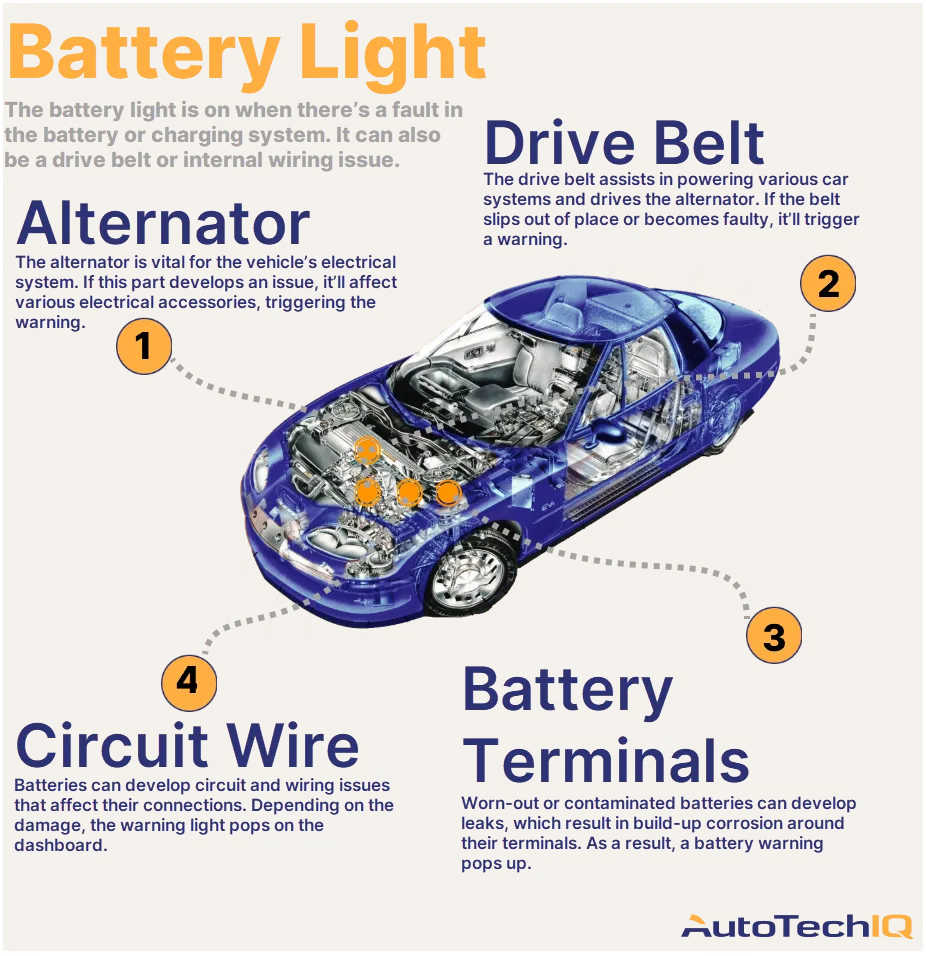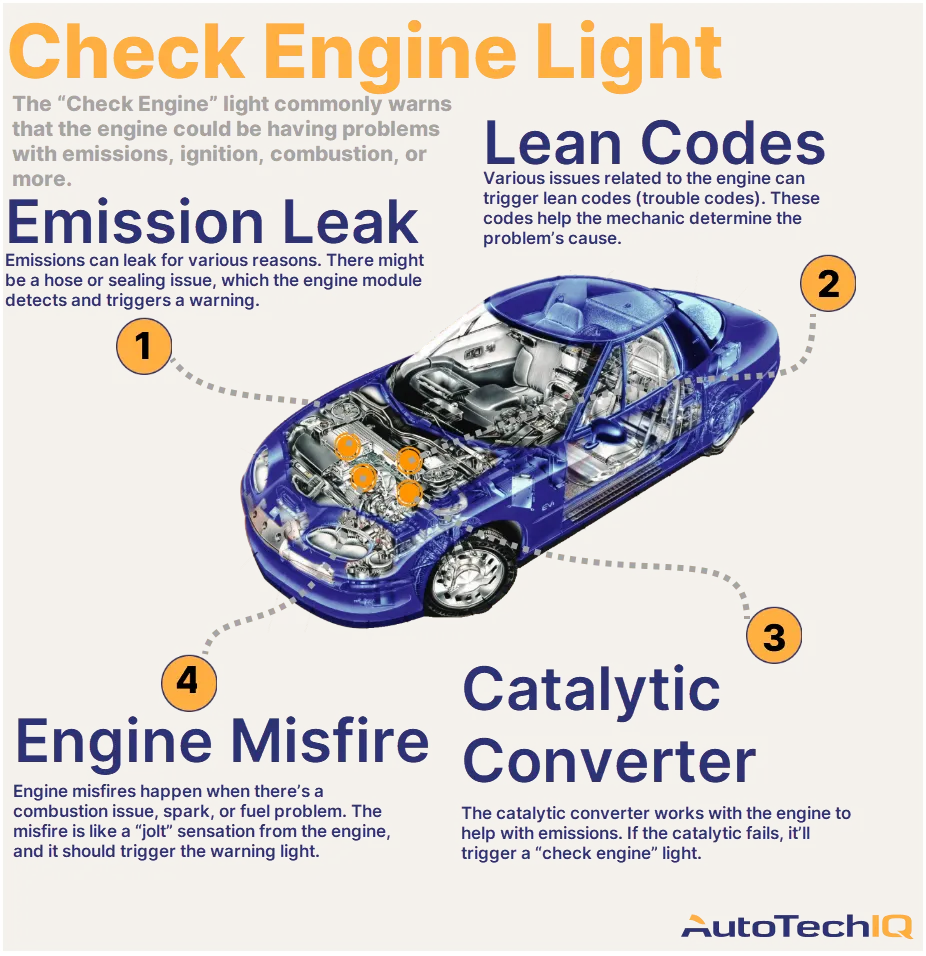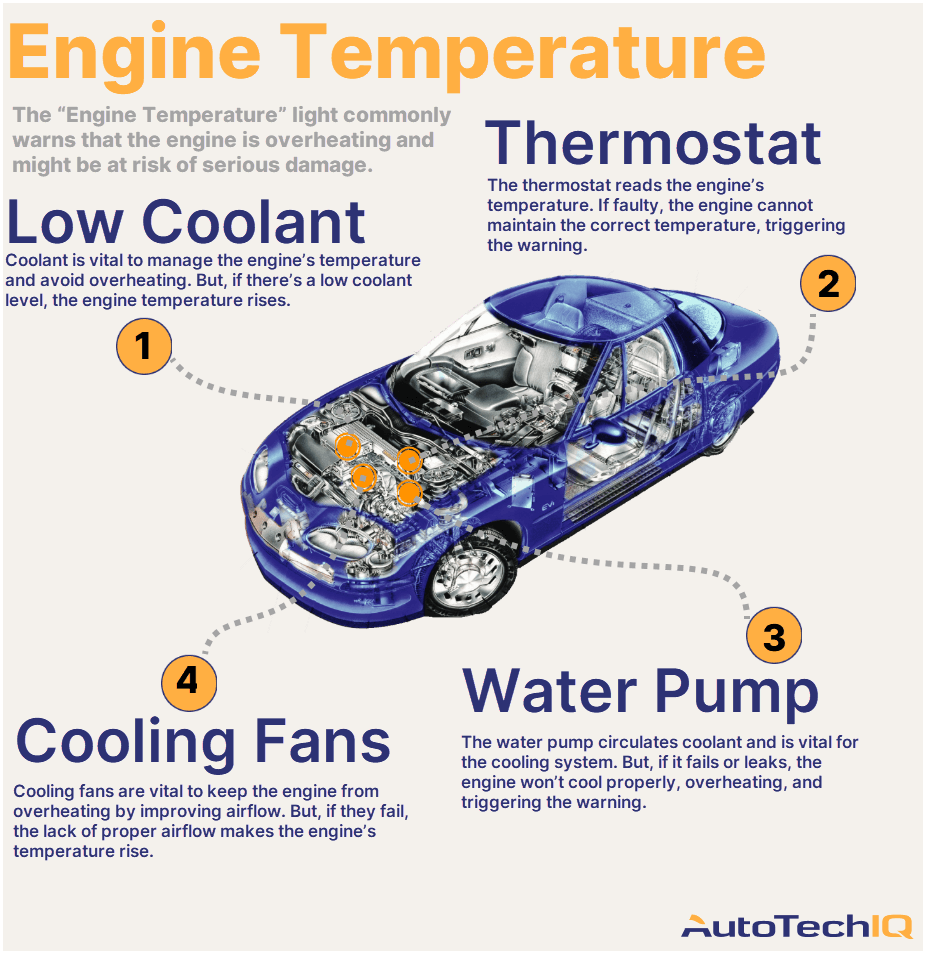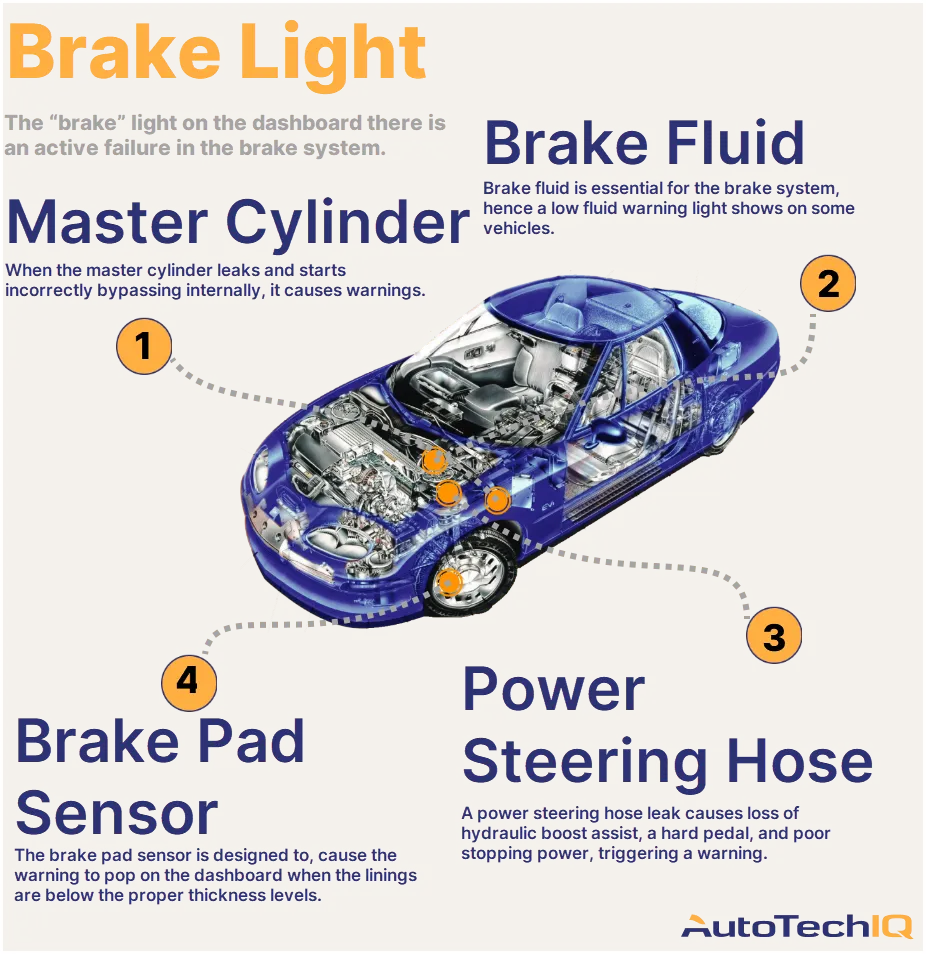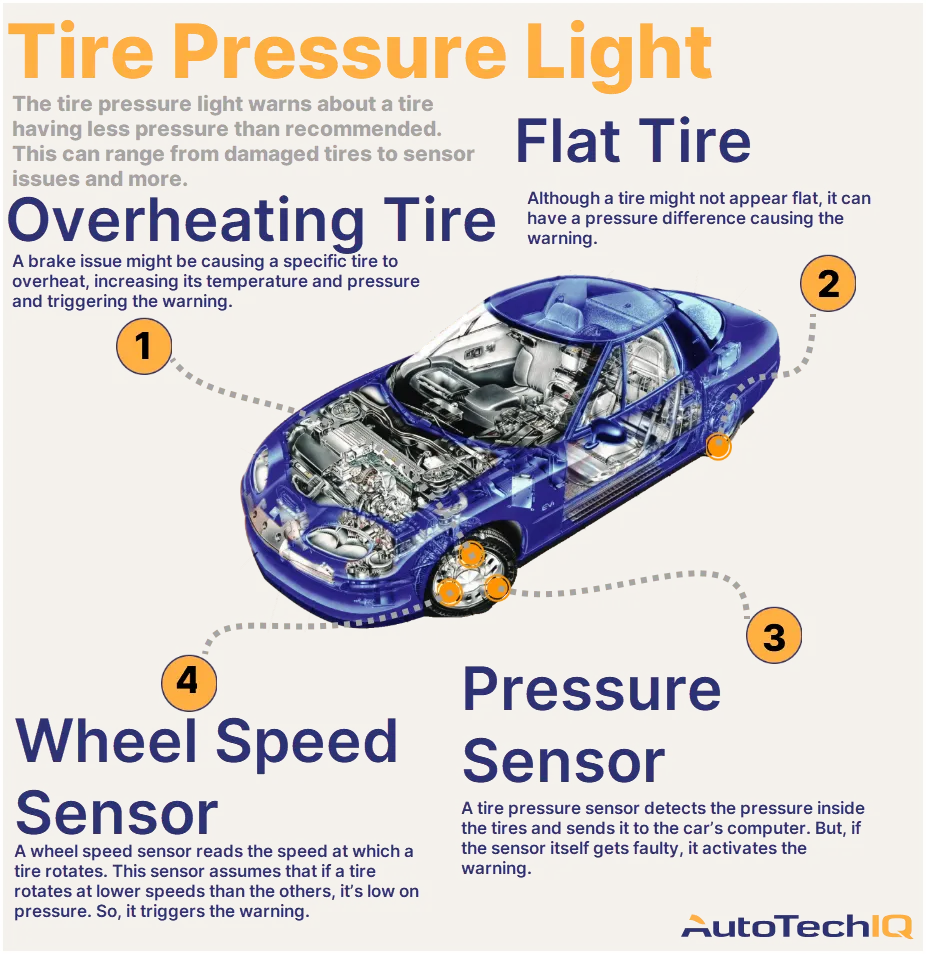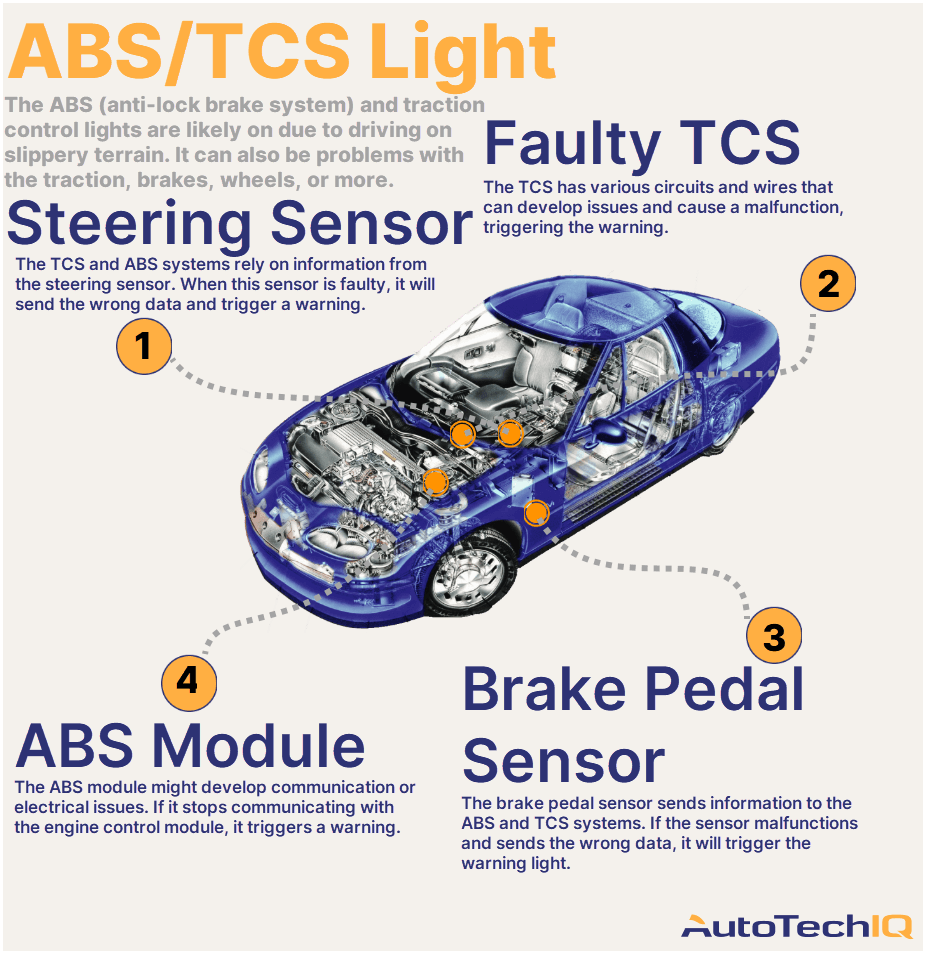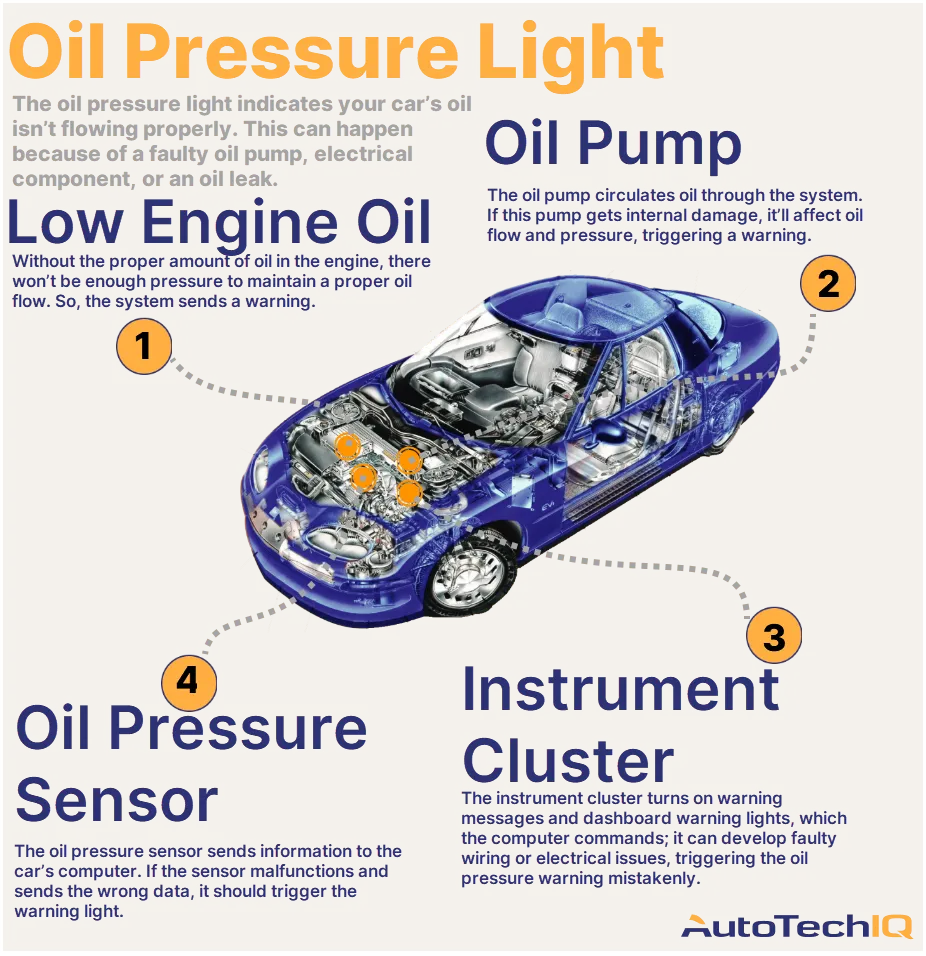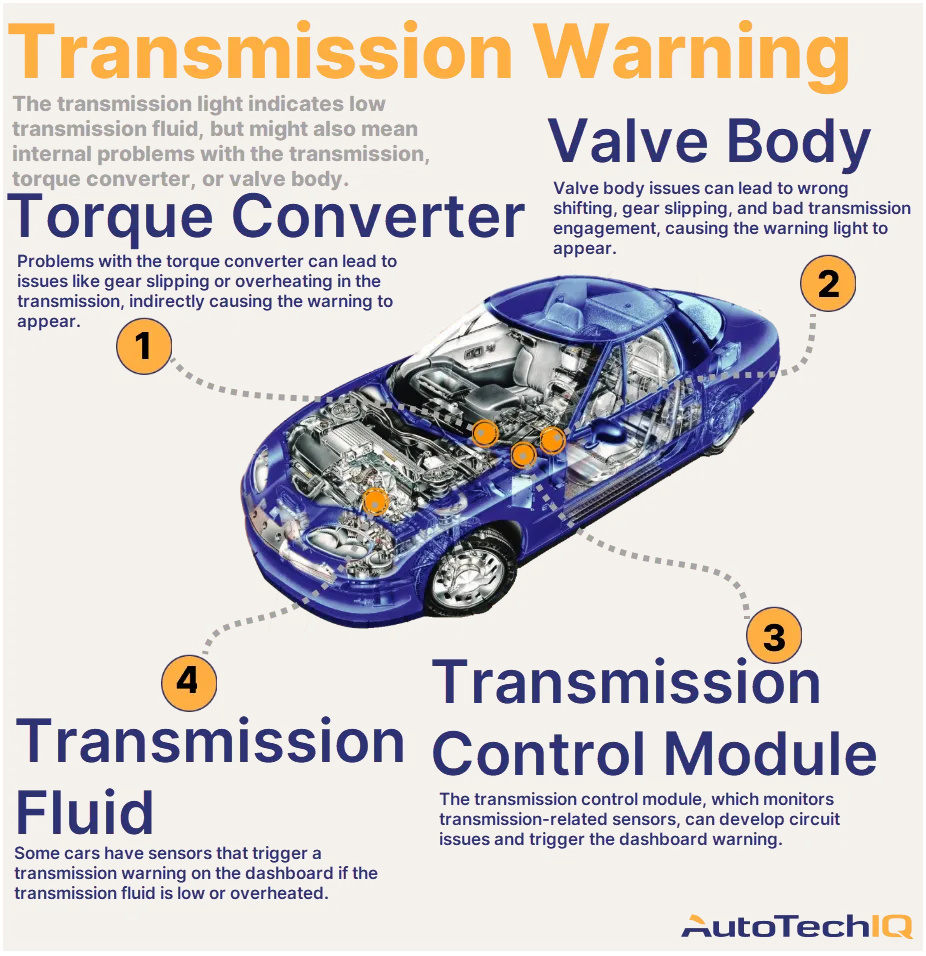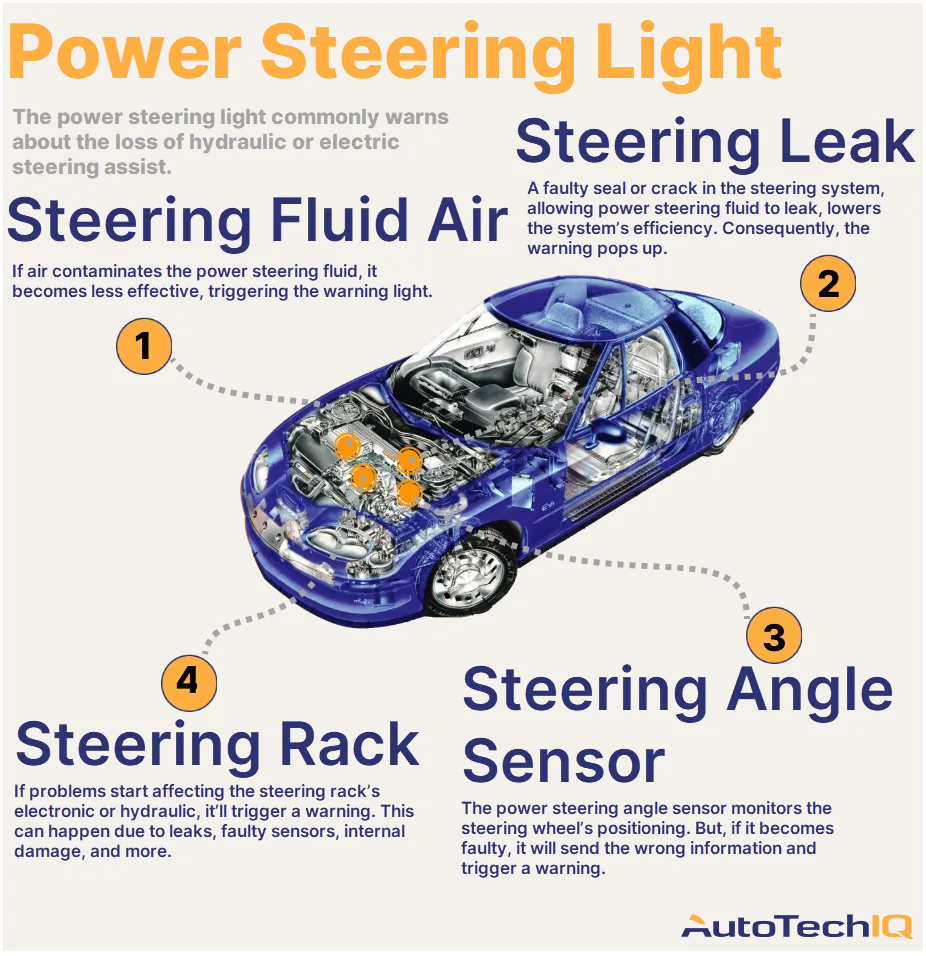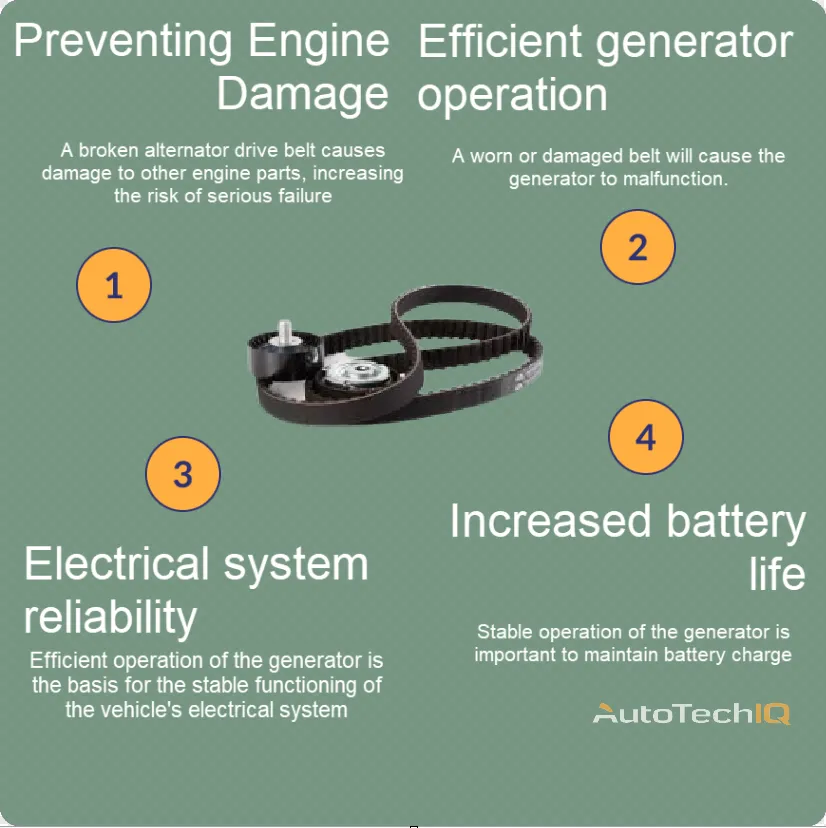
The replacement of the alternator belt and tensioner pulley ensures the stable operation of the car's alternator for several reasons:
- The new belt ensures reliable transmission of mechanical energy from the crankshaft to the generator, which is critical to the constant operation of the generator.
- Prevents the alternator belt from slipping.
- A worn belt, unlike a new one, can break, which will lead to the generator stopping and possibly stopping the car.
- With the help of a new alternator belt and tensioner, the battery is effectively charged, which is very important for ensuring engine starting, as well as for the stable operation of all electrical systems.
Signs of failure of the tensioner pulley or alternator belt, at which the driver should go to a service center for diagnostics and repair, include:
The generator does not provide full charging, or does not supply electricity at all, which can be determined by:
- the battery warning light
- dimming of the headlights and dashboard lighting
- a quieter sound of the signal
- slower operation of the windshield wipers
- increased interval in the operation of the turn signals
- problems with heating.
A typical sign of a stretched or worn belt is a whistling sound that occurs when starting the engine or after driving through a puddle. The source of the sound is the belt material slipping on the pulley surface. Usually, the whistle quickly disappears and reappears upon restarting the engine or after the next puddle. In this case, the owner needs to check the tension of the belt and try to bring it to the norm.
Increased humming, emitted by the tensioner pulley. It occurs on a running engine due to strong vibration of the roller or belt; the cause is play in the roller or wear of the belt on one side, which can be determined visually independently.
Any drive belt tensioner consists of two parts: a tensioning device, which creates the necessary force, and a pulley, which transmits this force to the belt. There are also devices that use a tensioner-damper, which provide not only the necessary belt tension, but also reduce the wear rate of the belt and pulleys of the units during transient engine operating conditions.
During the replacement of the alternator drive belt, the installation of a new tensioner pulley and associated fasteners may be required. Replacing the belt tensioner pulley will avoid damage to the new belt and the failure of the alternator itself.
After removing the worn belt, it is recommended to inspect the nature of the wear. If it has edge and contact part damage, this may indicate misalignment of the pulleys. In this case, it is necessary to find the damaged element and replace it. Installing a new belt on a damaged pulley is pointless, as the rubber will be quickly worn out.
Each alternator model requires its own level of belt tension.
Replacing the drive belt and tension roller should be done in a service center, since service centers have the necessary professional tools for carrying out repair work and adjusting belt tension, and professionals will also diagnose other potential problems. This can help prevent future breakdowns and costly repairs.


